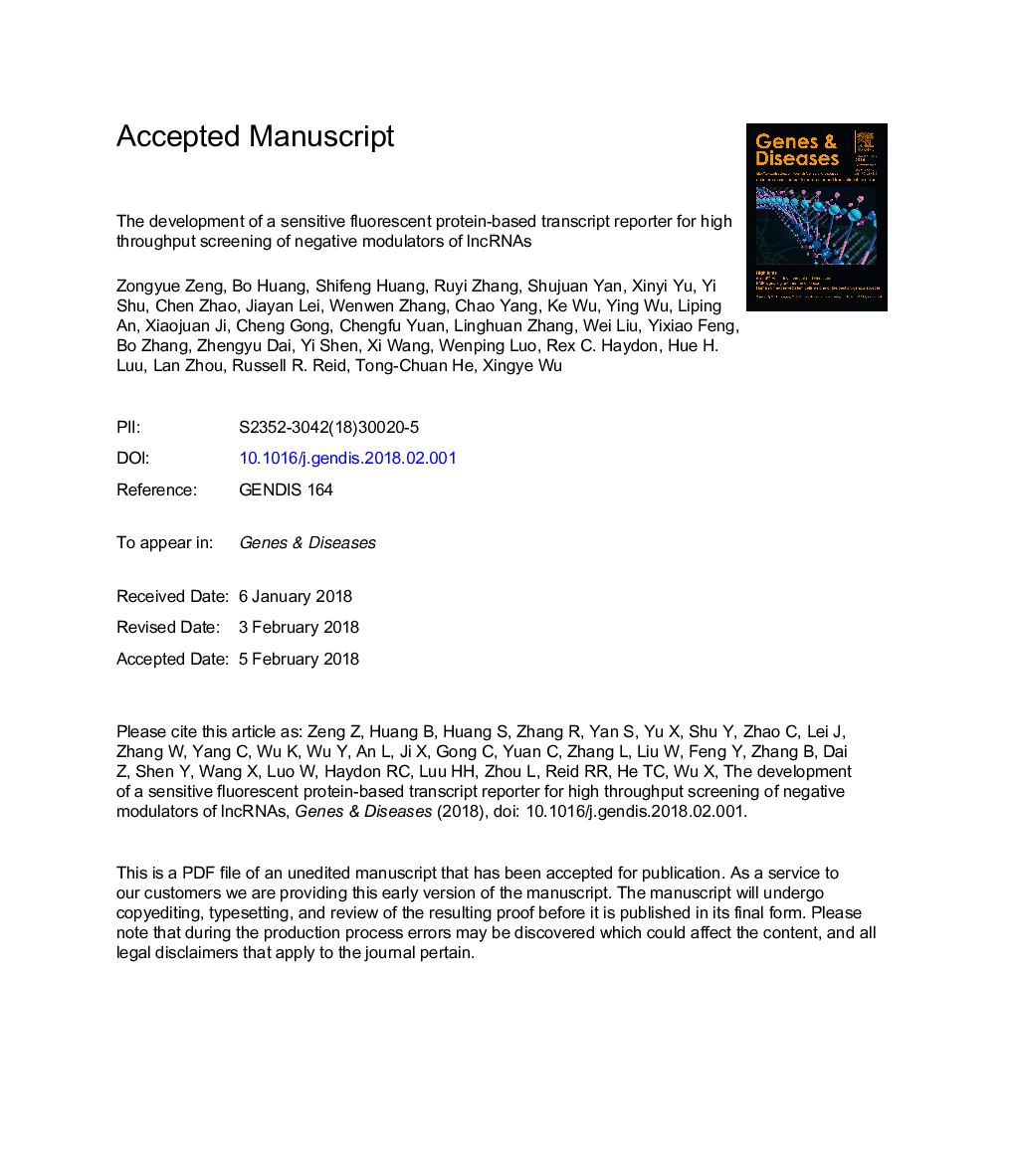| Article ID | Journal | Published Year | Pages | File Type |
|---|---|---|---|---|
| 8471159 | Genes & Diseases | 2018 | 34 Pages |
Abstract
While the human genome is pervasively transcribed, <2% of the human genome is transcribed into protein-coding mRNAs, leaving most of the transcripts as noncoding RNAs, such as microRNAs and long-noncoding RNAs (lncRNAs), which are critical components of epigenetic regulation. lncRNAs are emerging as critical regulators of gene expression and genomic stability. However, it remains largely unknown about how lncRNAs are regulated. Here, we develop a highly sensitive and dynamic reporter that allows us to identify and/or monitor negative modulators of lncRNA transcript levels in a high throughput fashion. Specifically, we engineer a fluorescent fusion protein by fusing three copies of the PEST destruction domain of mouse ornithine decarboxylase (MODC) to the C-terminal end of the codon-optimized bilirubin-inducible fluorescent protein, designated as dBiFP, and show that the dBiFP protein is highly destabilized, compared with the commonly-used eGFP protein. We further demonstrate that the dBiFP signal is effectively down-regulated when the dBiFP and mouse lncRNA H19 chimeric transcript is silenced by mouse H19-specific siRNAs. Therefore, our results strongly suggest that the dBiFP fusion protein may serve as a sensitive and dynamic transcript reporter to monitor the inhibition of lncRNAs by microRNAs, synthetic regulatory RNA molecules, RNA binding proteins, and/or small molecule inhibitors so that novel and efficacious inhibitors targeting the epigenetic circuit can be discovered to treat human diseases such as cancer and other chronic disorders.
Related Topics
Life Sciences
Biochemistry, Genetics and Molecular Biology
Cell Biology
Authors
Zongyue Zeng, Bo Huang, Shifeng Huang, Ruyi Zhang, Shujuan Yan, Xinyi Yu, Yi Shu, Chen Zhao, Jiayan Lei, Wenwen Zhang, Chao Yang, Ke Wu, Ying Wu, Liping An, Xiaojuan Ji, Cheng Gong, Chengfu Yuan, Linghuan Zhang, Xingye Wu,
